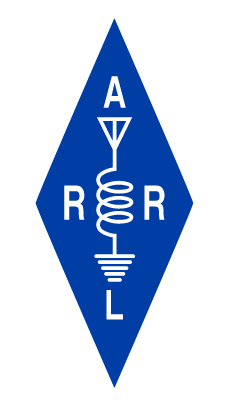 The ARRL has appointed me as interim Maine Section Manager effective December 1, 2021 as Bob Gould, N1WJO, has resigned for personal reasons. I join with all of you in thanking him for his service to our section.
The ARRL has appointed me as interim Maine Section Manager effective December 1, 2021 as Bob Gould, N1WJO, has resigned for personal reasons. I join with all of you in thanking him for his service to our section.
During the next few months I will focus on expanding Maine’s amateur radio community by enticing more people with the exciting and fun aspects of amateur radio. Grabbing the attention of the youth among our population is a high priority of mine, and my Assistant Section Managers, Affiliated Club Coordinator, and Youth Coordinator will help me in this goal. Shoring up our Amateur Radio Emergency Service around the state and filling the vacancies is also a top priority. In the coming days I will be making a variety of field service appointments to help in this endeavor.
Please join me in extending sincere appreciation to George Szadiz K1GDI, and Cory Golob KU1U, who have served in leadership positions but will be handing over the reigns to new appointees.
Bradley Brown, Jr, KC1JMH is replacing George K1GDI as Section Youth Coordinator. Brad is already very active in youth organizations such as the boy scouts and cup scouts. He is den leader of the local cub scout troop. He is an IT guy and embraces new modes and technologies, and is the perfect fit for the pivotal role of SYC. Brad is also president of the Wireless Society of Southern Maine.
Dennis Bosley, WA1URS, has accepted the role of Section Traffic Manager effective in January, relieving Cory Golob, KU1U. Thank you to both of these hams for taking on this important role. Cory will continue to serve as Assistant Section Manager. Dennis is an enthusiastic traffic handler, Friday net control station for the Maine Seagull Net, and is also a District Emergency Coordinator.
I can’t express enough gratitude to Rod Scribner, KA1RFD, who for decades has served both the Maine ARRL section and the State of Maine in many ways. Rod has served as Maine’s Section Emergency Coordinator, Net Manager, ham radio instructor, volunteer examiner, and so much more and has brought uncounted number of people into this great hobby. Rod is relinquishing his longtime position of State Government Liaison to Peter Hatem, KC1HBM.
Peter is currently an ASM for District 1, and VP of the Wireless Society of Southern Maine. He is also a Maine licensed attorney since 2000, and was involved in 2019 to modify Maine’s handheld electronic device, while operating motor vehicles ban to except ham radios from the ban. He is also Net Manager for the Maine Dirigo Net, a DMR net on Maine Statewide Talkgroup that meets on Sundays at 1000 local on the NEDECN DMR system. He is currently building out his ham shack above a new garage addition to his home in Scarborough.
Thank you Steve Curry, KD1O, for accepting the appointment as Affiliated Club Coordinator. His enthusiasm for amateur radio is a quality that is exactly what we need in an ACC. Steve is Treasurer of the Waldo County ARC. Check out his QRZ page. Quite impressive!
The outgoing president of the Ellsworth Amateur Wireless Association, Jeff Hanscom, KA1DBE, will be replacing me as District 3 Assistant Section Manager. Jeff is one of the most enthusiastic and active amateur radio operators I know and he will prove to be of great value to our section’s leadership team.
There will be other appointments to Maine’s field services in the coming weeks. Your support and feedback are greatly appreciated. I wish you all a super holiday season! Thank you and 73.
Phil Duggan, N1EP
n1ep@arrl.net (my dot org not activated yet!)
——————————
ARRL Maine Section
Section Manager: Philip W Duggan, N1EP
n1ep@arrl.org
——————————

 The December, 2021 edition of the Maine Telegraph Newsletter, the statewide newsletter for Maine Amateur Radio operators, is now available at: <
The December, 2021 edition of the Maine Telegraph Newsletter, the statewide newsletter for Maine Amateur Radio operators, is now available at: <